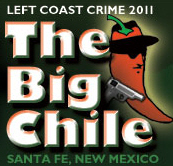What's a "grubstake," you may wonder?
Well, I shall tell you.
According to Merriam Webster (online), a grubstake is supplies or funds furnished a mining prospector on promise of a share in his discoveries. (First use: 1863)
 Grubstaking was responsible for a number of fortunes in the silver-mining boomtown Leadville, Colorado, for instance. There's Horace Tabor, who grubstaked what later became The Matchless Mine—ultimately making millions by outfitting two prospectors with picks, shovels, and food. (You can read about The Matchless and Horace Tabor's $17.00 initial investment here.)
Grubstaking was responsible for a number of fortunes in the silver-mining boomtown Leadville, Colorado, for instance. There's Horace Tabor, who grubstaked what later became The Matchless Mine—ultimately making millions by outfitting two prospectors with picks, shovels, and food. (You can read about The Matchless and Horace Tabor's $17.00 initial investment here.) From our high-tech 21st century perspective, what's the equivalent opportunity? IPOs for Facebook, LinkedIn, and such? Ha! Don't make me laugh... I haven't millions (or thousands) to spare on a game like that. However, a friend introduced me to Kickstarter, and, after looking around the site, I think this may be about as close as it comes to modern day grubstaking. Kickstarter, according to its FAQ, "is a new way to fund creative projects." As a backer to any of the bazillions of projects, you can "kick in" as little as a dollar and help creative folks make their dreams come true. And you may not make millions, but you might get a t-shirt, a one-of-a-kind object, or some such. You can create your own Kickstart project.
So, with my modest pin money, I waded in, and backed two projects. In time-travel whiplash style, I backed one that's very 19th century, and another that's very 21st century.
19th century first: The Tin Gypsy, a project to "keep alive" antique photographic processes dating back to the 1850s, including tintypes (images on metal plates), ambrotypes (images on glass plates), as well as salted paper and albumen prints (images on paper coated with salts and albumen from egg whites). Check it out!
The 21st century project I'm grubstaking: Guitar Games. I'm somewhat prejudiced in favor of the whole concept, as this is the brainchild of a friend of mine. Too, Guitar Games encourages musicality in the next generation (or any generation), a goal that gets a big thumbs up from me!
I'm glad to see a venue like Kickstarter around. Yeah, we may not get rich off of any of this (at least, not the way Tabor got rich from grubstaking a couple of broke silver prospectors), but Kickstarter allows "small folk" like me to fuel the creativity of others, enriching us all.







 Link to Moments in Time
Link to Moments in Time






